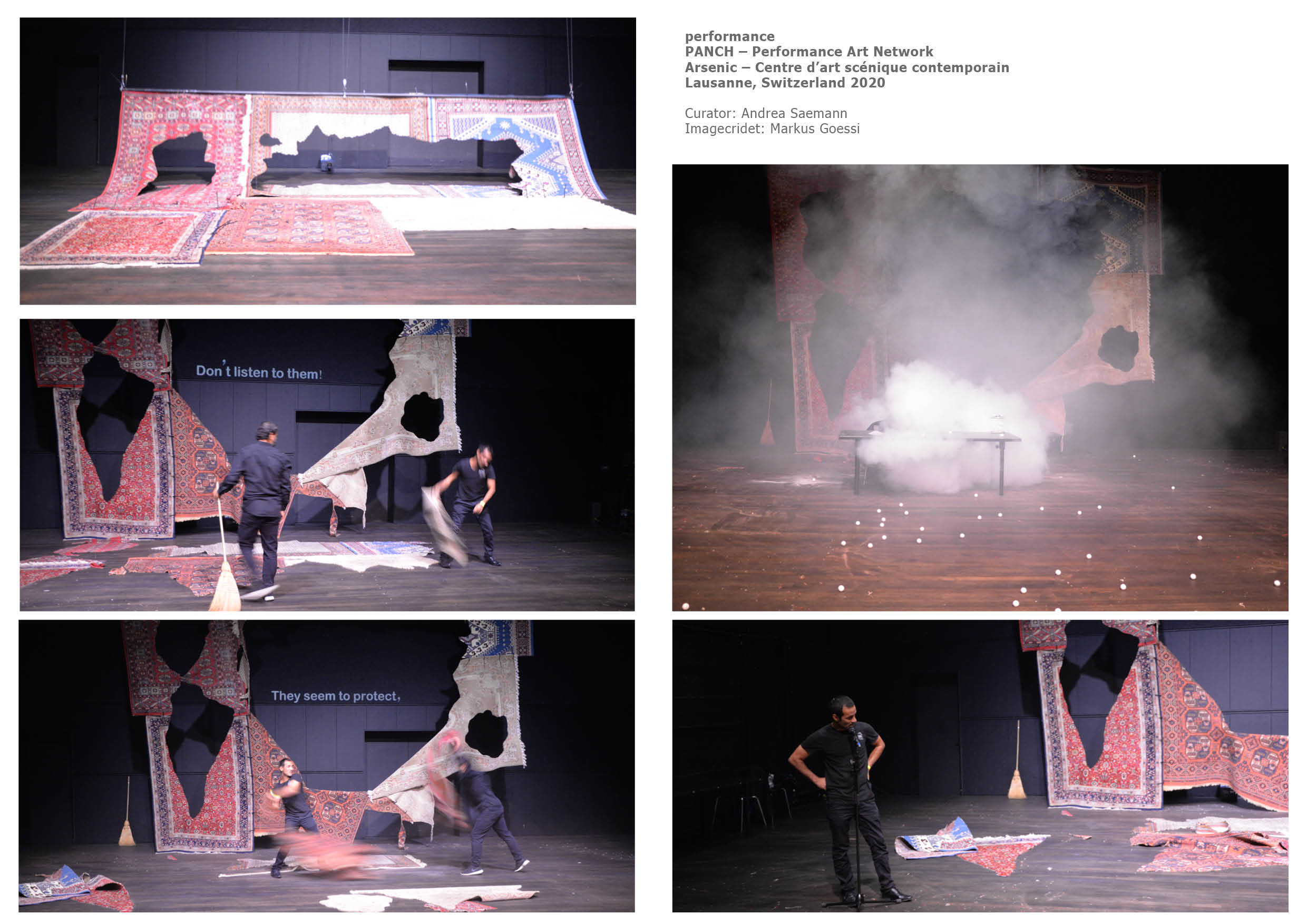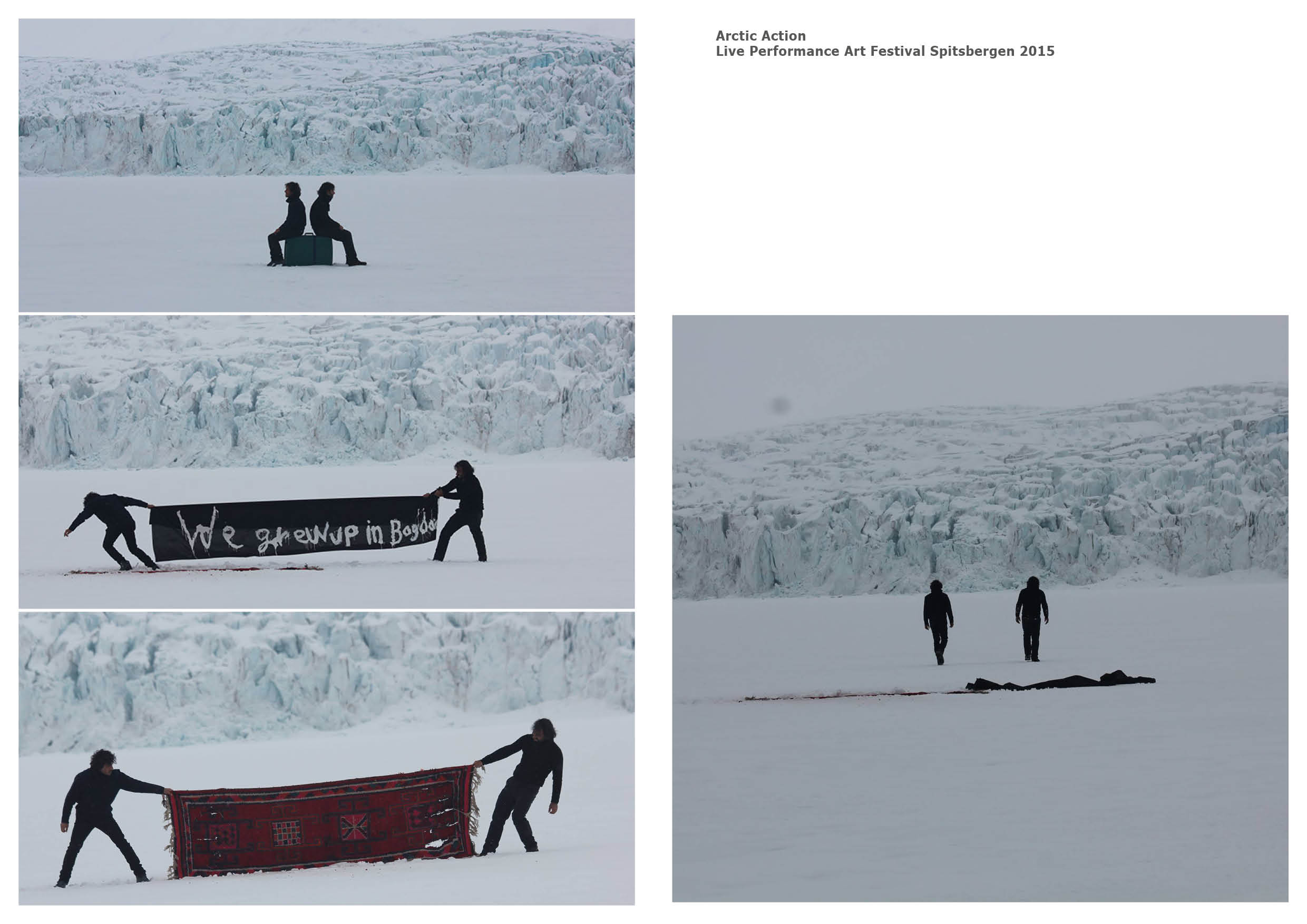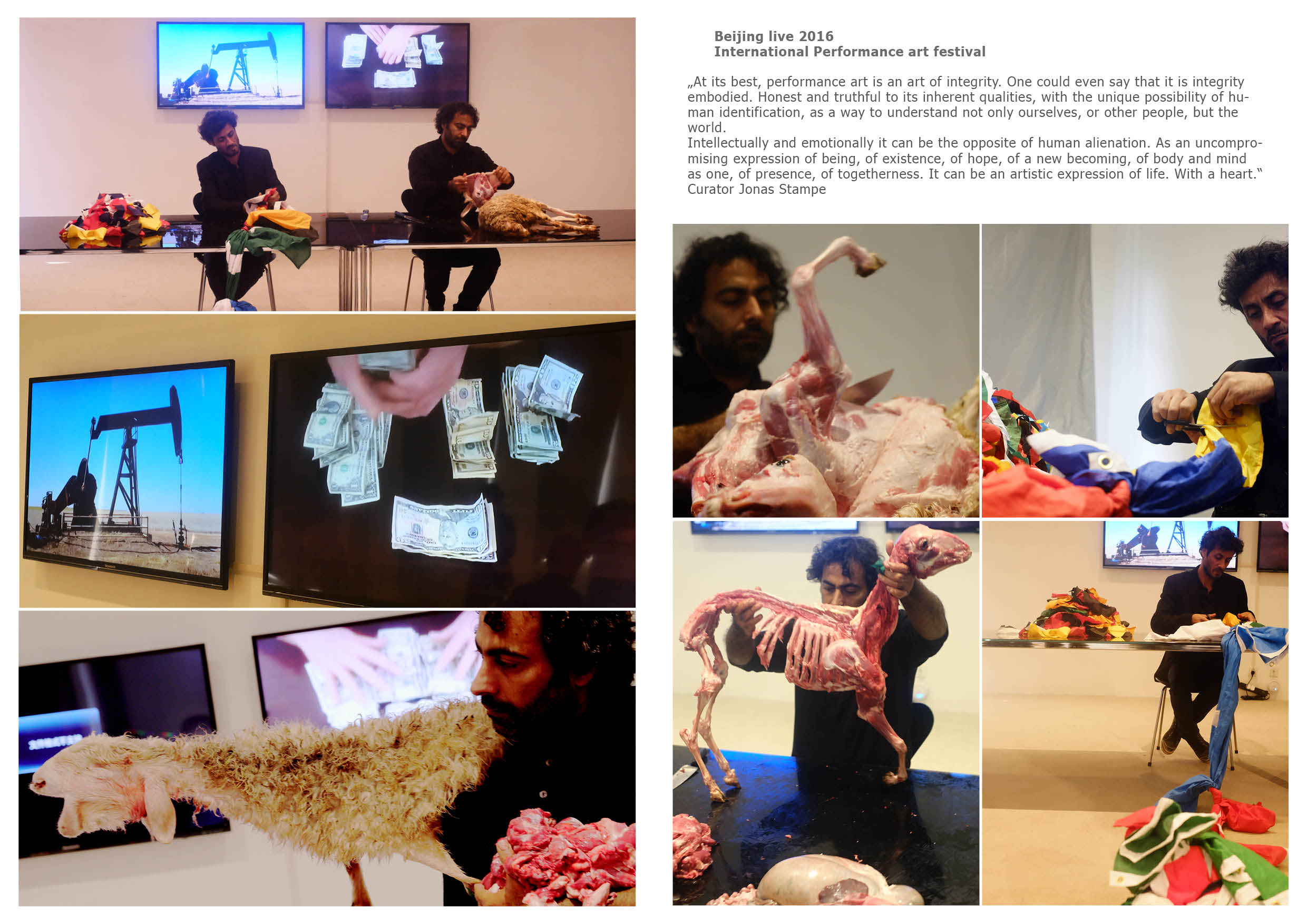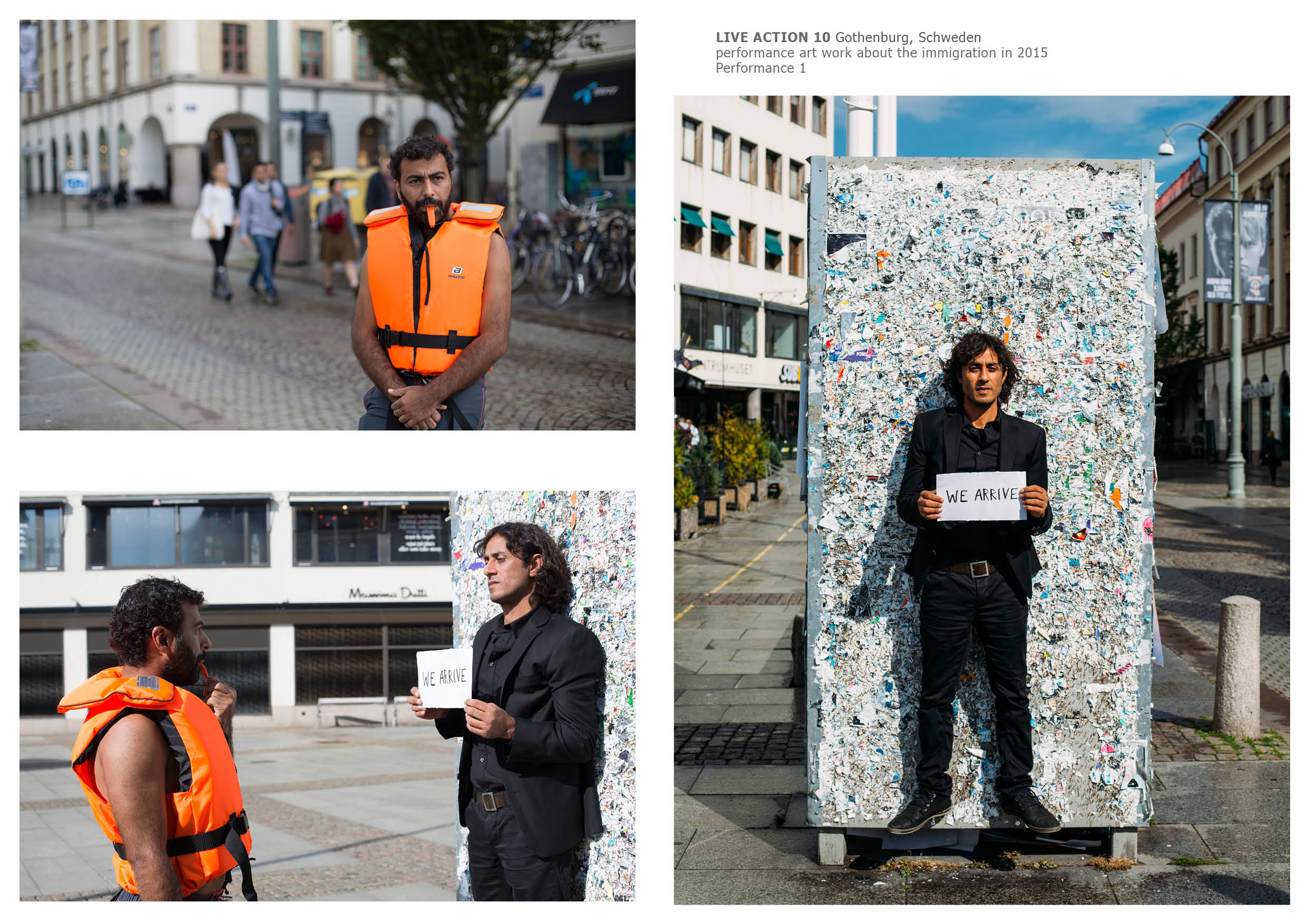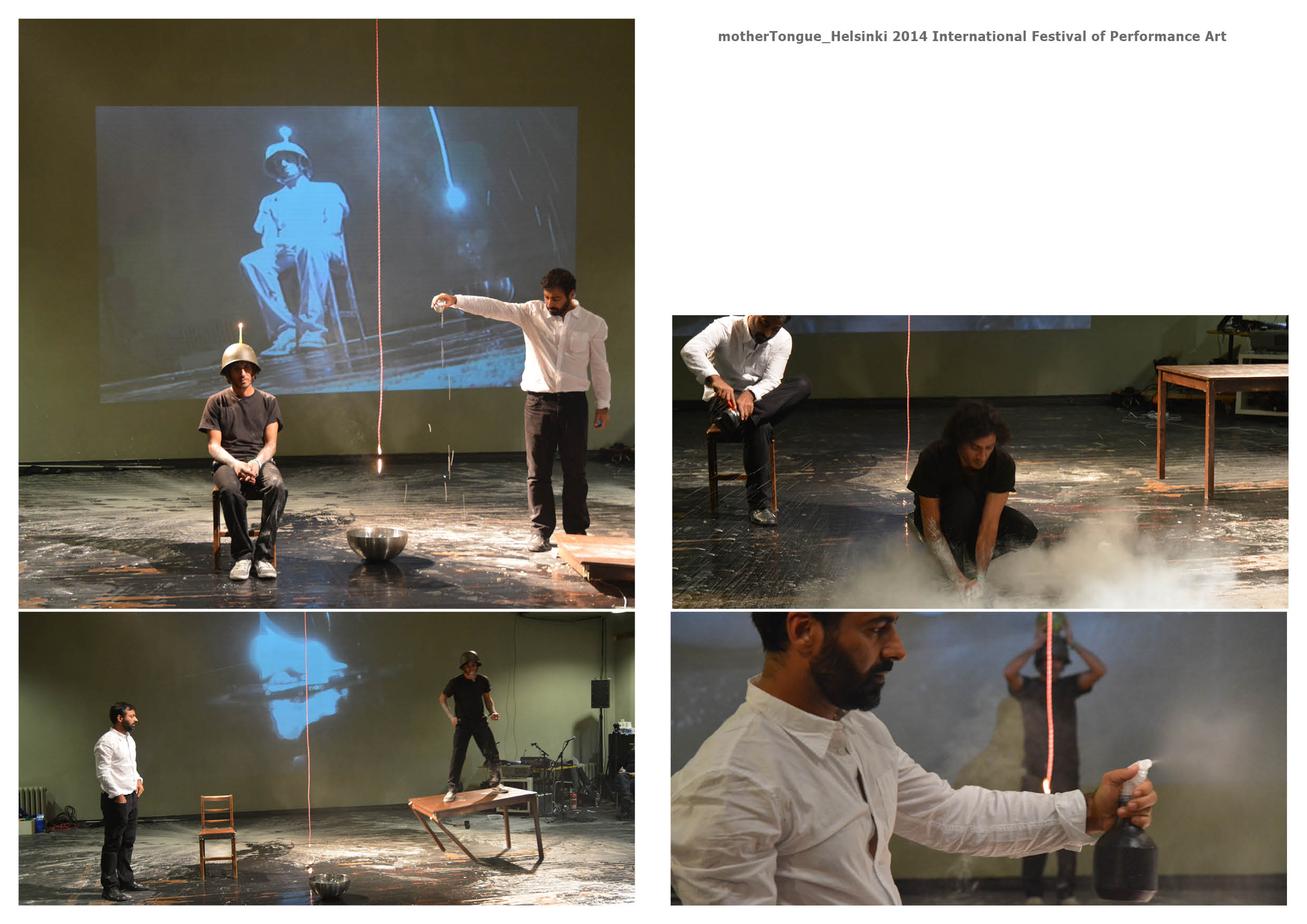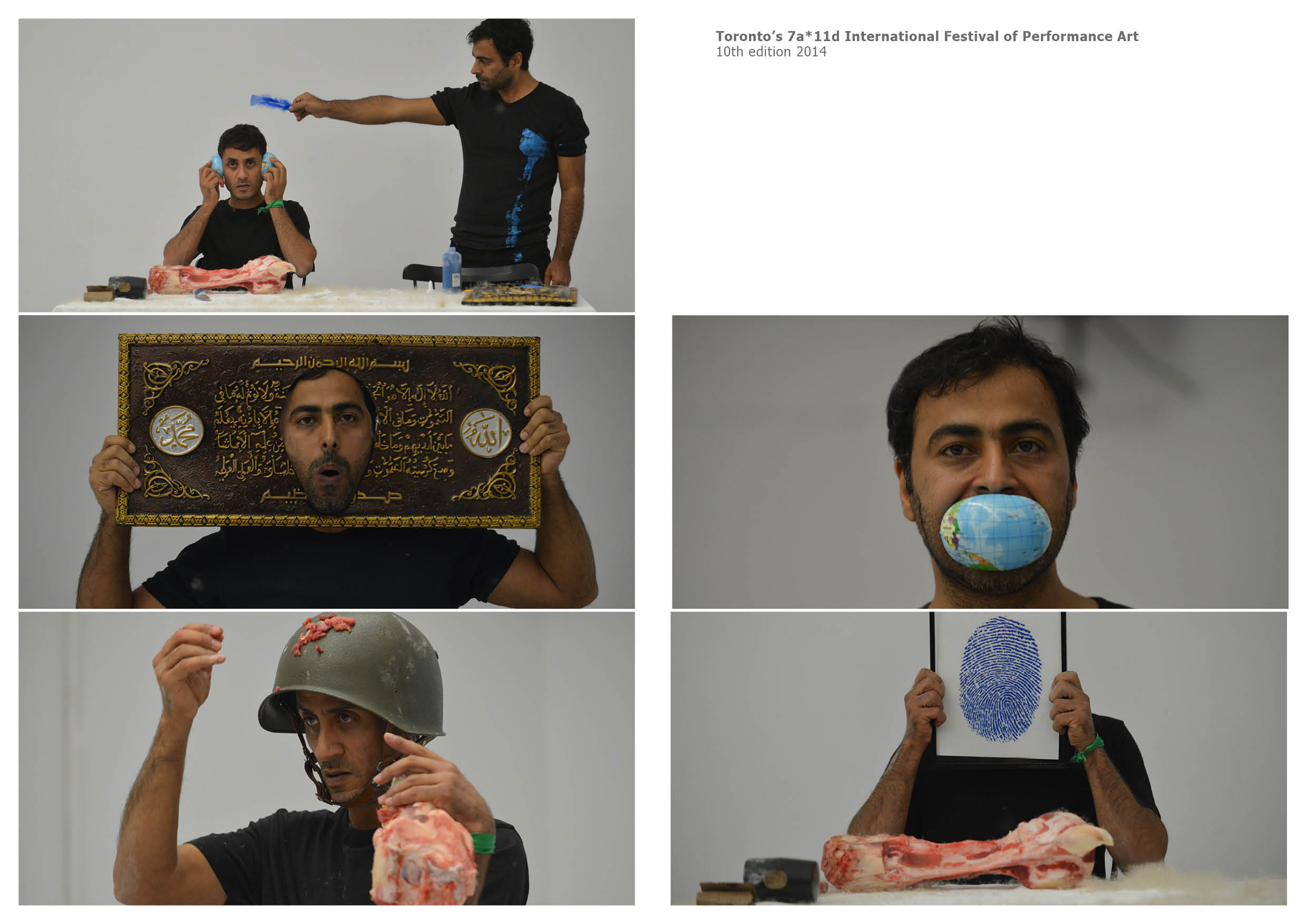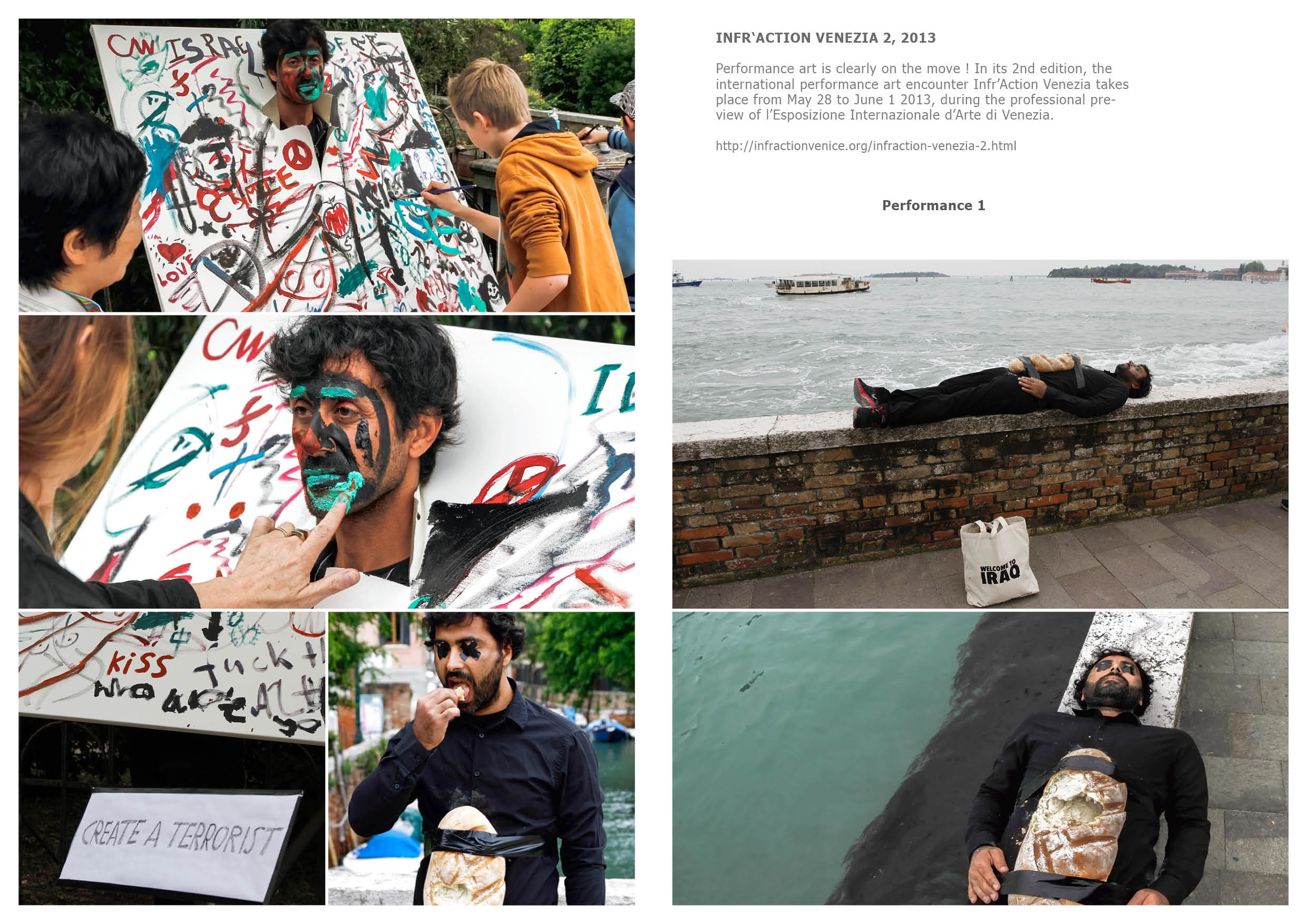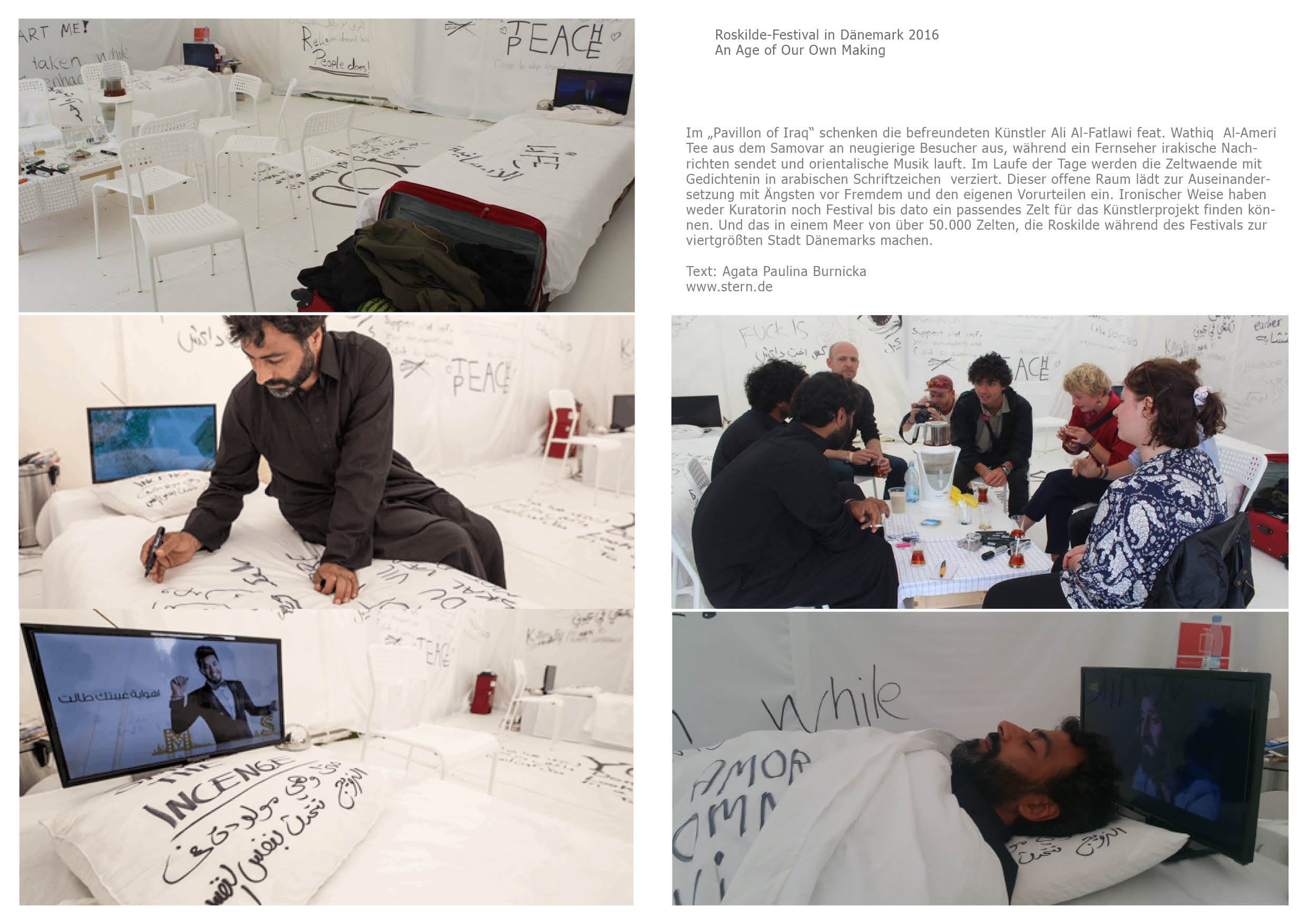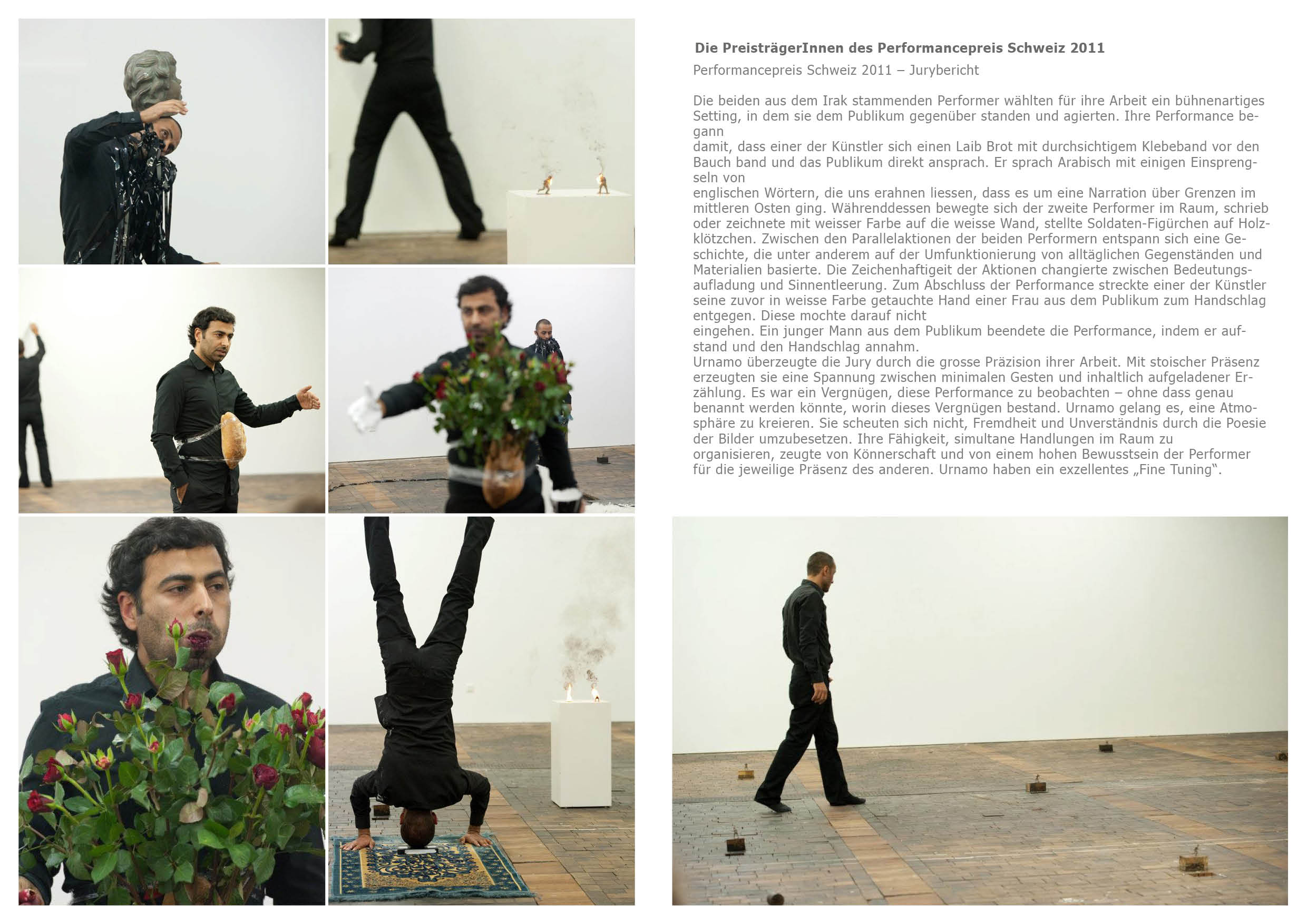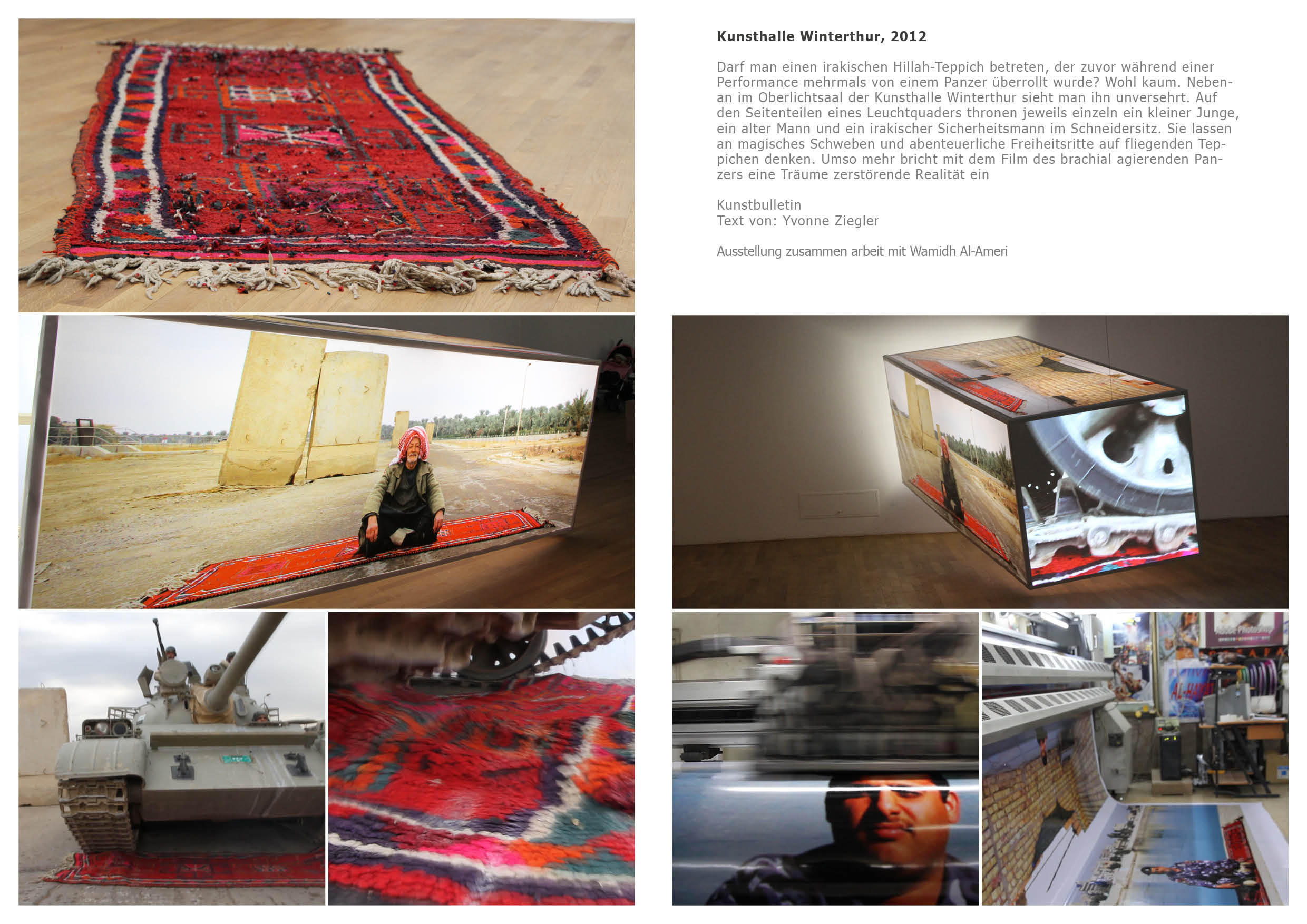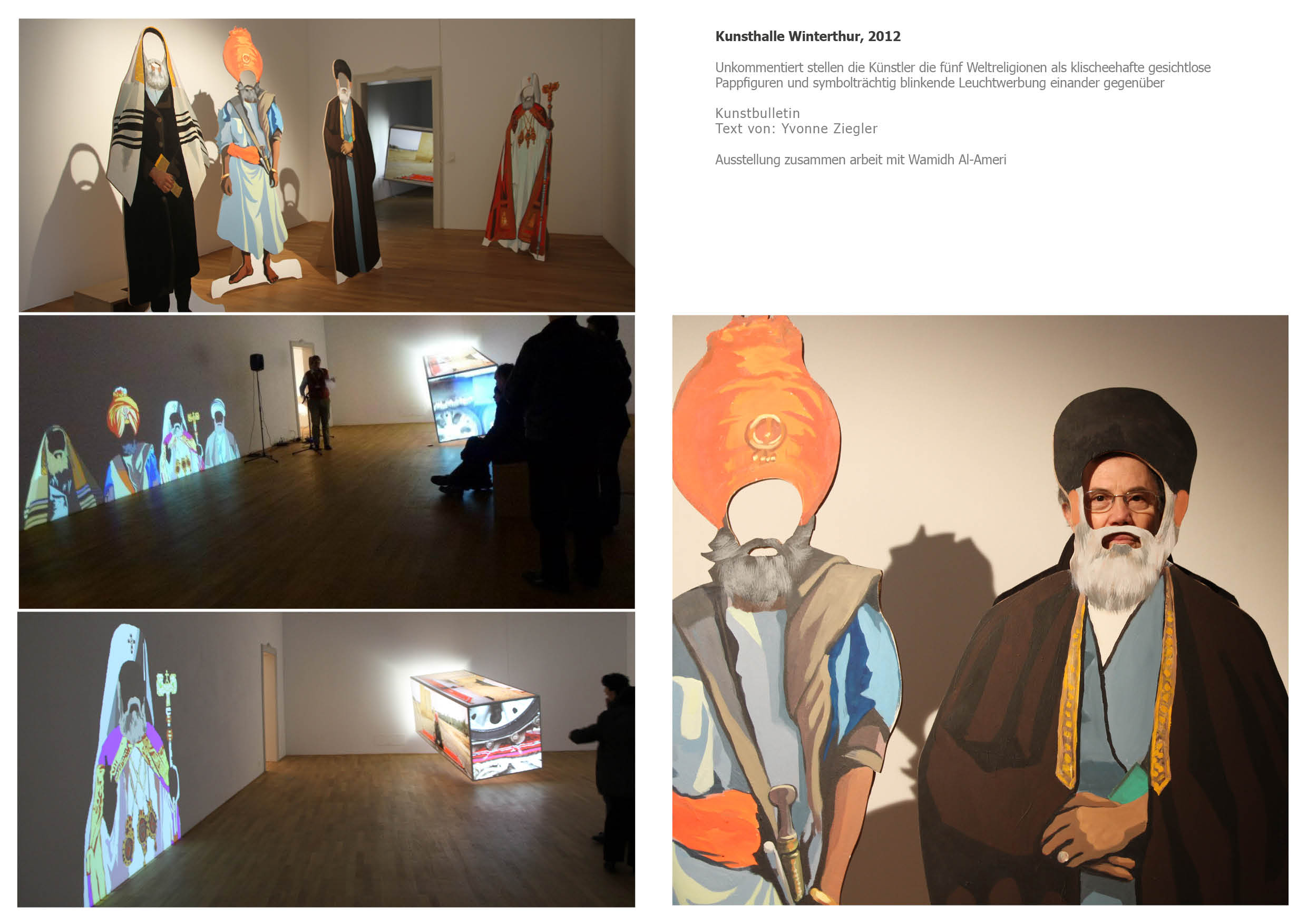Wathiq Al-Ameri & Ali Al-Fatlawi Born in 1972 and grew up in Baghdad, Iraq. They studied at the Institute of Fine Arts in Baghdad and graduated in 1994. And 1999-2002 F+F Schule für Kunst und Medien, Zürich, Schweiz
The life Art project and performance‘s of Ali Al-Fatlawi and Wathiq Al-Ameri reflect and challenge the West’s attitudes to Iraq and Iraqi culture – the fears and expectations and the dread arising from
civil casualties, border-crossings and the psychological pressure expressed in physical gestures. The mortal as part of everyday life, dealing with war acts and the role of memory and lost lives in war
are also important subjects expressed in their performances. Ali Al- Fatlawi and Wathiq Al-Ameri won the Performance Art Award Switzer- land in 2011, which was followed more recently with the prestigious Swiss Art Award 2012. Ali Al-Fatlawi & Wathiq Al-Ameri are based in Switzerland and collaborate as part of the studio Urnamo founded in 2002. They have known each other since childhood and studied toge- ther at the Bagdad Arts Academy in Iraq and F+F Submit Schule für Kunst und Design.
One of the subjects that appears regularly in Al-Fatlawi’s and Al- Ameri’s various performances is the importance of memory. They believe that memories are stored in the body and that their elements can be retrieved from the past to be accommodated in the present.
As such, frictions between an official version of an event, its media- tic version, and reality lived by humans is a matter of concern of their performances. In White Haunting Black, performed at the Art Festival of Spitsbergen (2015), two figures wore contrasting costumes of Black and White. Even though they carried out actions in the same space, they were occupied by different, parallel activities – Black working manually, White walking and playing golf – and their paths never crossed. Watching one of these typical performances – the viewer doesn‘t need any kind of comment or direct explanation; literally everyone takes part in the alienating matrix of labor and power divisi- on.
In order to speak without words and express narration by action, they use a wide range of objects. Al-Fatlawi and Al-Ameri often use sym- bols of war and peace – military helmets, red roses, plastic soldiers that may be burned during performances, refugee life jackets, and various cultural symbols, such as Iraqi carpet that marks their origins. Their performances take place in theaters as well as in public places or landscapes, such as the prehistoric landscape covered with snow at the Art Festival of Spitsbergen, giving them a monumental stage.
